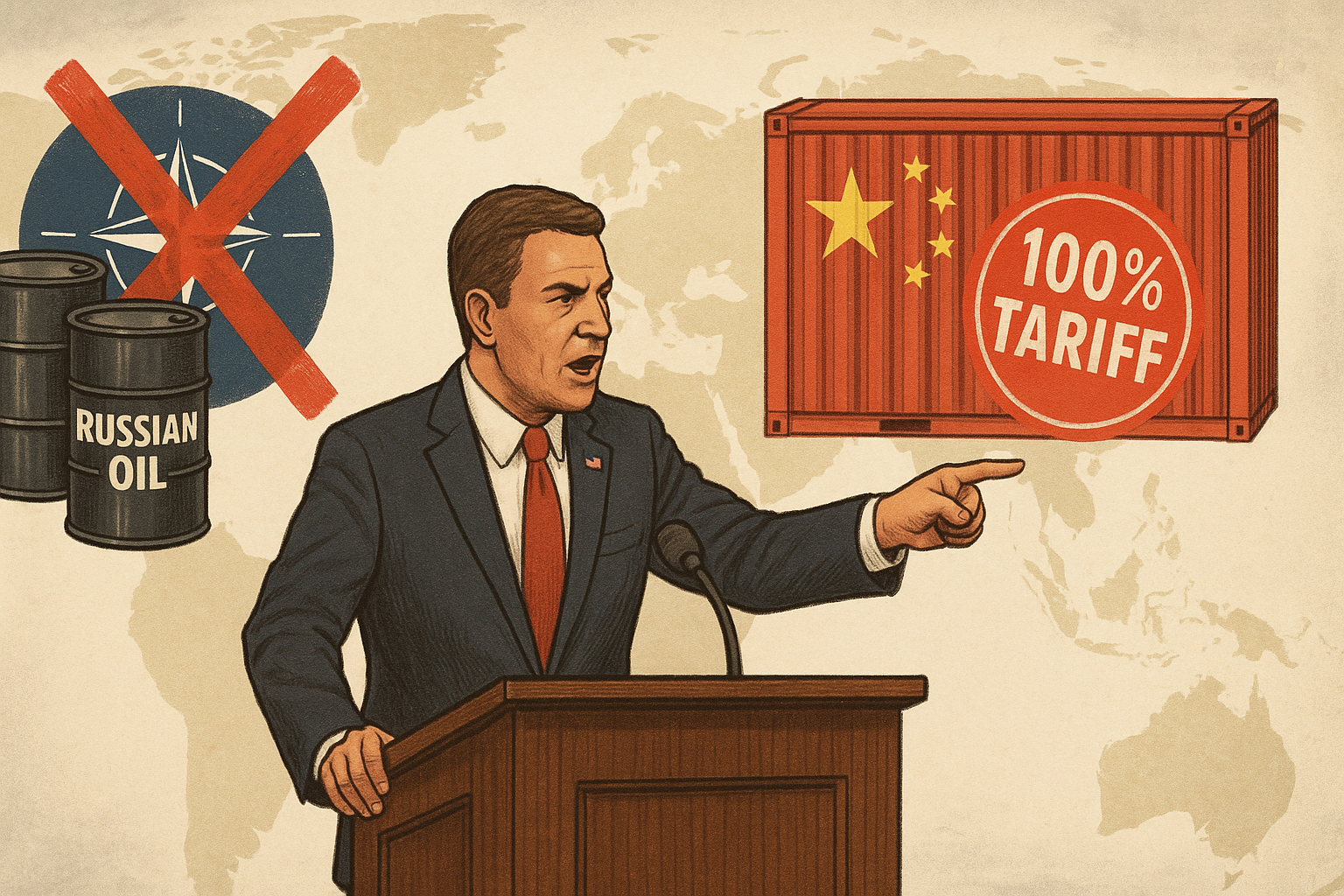Former President Donald Trump has thrown a new wrench into the global energy and trade conversation, demanding NATO countries cut off Russian oil purchases while simultaneously threatening China with eye-popping tariffs that could reach 100%. The timing? Perfectly Trumpian—right as energy markets try to find their footing and global tensions simmer on multiple fronts.
Look, we've seen Trump take shots at NATO before. Remember the "pay your fair share" years? But this pivot to energy policy represents something different—and honestly, not entirely illogical.
There's always been something awkwardly contradictory about the NATO-Russia energy relationship. European members maintain a military alliance supposedly countering Russian influence while pumping billions into Moscow's coffers through energy purchases. It's like hiring a bodyguard while sending monthly donations to the person you need protection from.
The numbers here matter. European NATO members currently buy around 2.2 million barrels of Russian crude daily—that's roughly $55 billion annually. Not pocket change by any standard.
What Trump's missing (or ignoring) is what I call the "squeeze the balloon" effect in energy markets. Push down in one spot, and the air just moves elsewhere. If NATO countries stop buying Russian oil tomorrow, that supply doesn't vanish—it finds new homes in places like India and China, often at discount prices that still keep Moscow's lights on.
And then there's the China tariff threat.
This isn't just returning to the greatest hits album—it's cranking the volume way past where it was before. The previous Trump administration averaged around 20% tariffs on Chinese goods. Now we're talking 50-100%? That's not a tweak; that's economic dynamite.
I've spoken with several trade analysts who can't even model what tariffs that high would do. We'd be in uncharted territory. American consumers would face serious sticker shock, global supply chains (still catching their breath from pandemic chaos) would fracture again, and Chinese manufacturers would be scrambling.
The fascinating part is how these two policies might interact with each other. Push Europe away from Russian oil while simultaneously isolating China with massive tariffs, and what happens? You practically gift-wrap a stronger Russia-China economic partnership. Moscow needs buyers; Beijing needs energy. I've covered international trade for years, and this kind of policy pairing could accelerate exactly the kind of economic bloc formation that Washington strategists have nightmares about.
Could Trump actually implement either of these ideas? That's... complicated.
NATO requires consensus (good luck getting 30 countries to voluntarily create energy shortages), and those tariff levels would face both legal challenges and inevitable retaliation. The European energy ministers I've spoken with—off the record, naturally—aren't exactly rushing to tear up their Russian contracts.
Markets seem to be taking the "we've heard this before" approach. Energy traders recognize that campaign trail promises don't always translate to actual policy. They've been burned before (haven't we all?).
But dismissing Trump's policy proposals as mere bluster has proven costly in the past. His administration taught us that while not everything he threatens comes to pass, enough does to warrant serious consideration.
For investors with skin in the game, the smart move might be preparing for volatility in both energy stocks and anything with significant China exposure. And for those NATO energy ministers? Well, they might want to dust off those alternative supplier contracts. Just in case.
Because with Trump, you never quite know which seemingly outlandish proposal might become tomorrow's reality.
